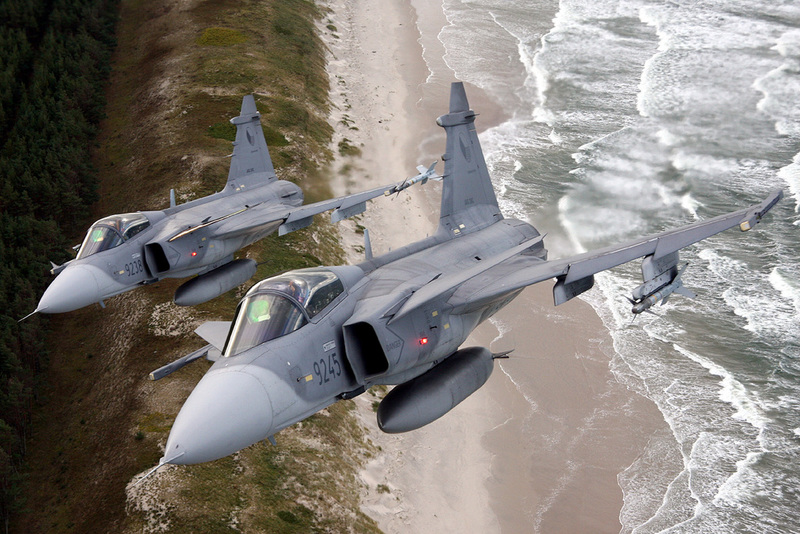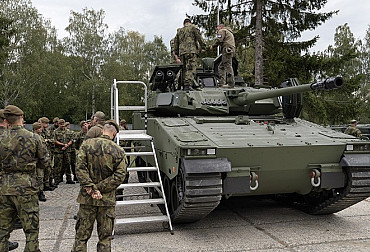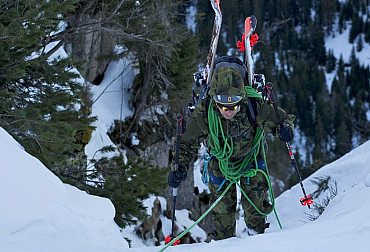The Future of the Czech Supersonic Air Force: Gripen or F-16?
The Concept of construction of the ACR 2030 firmly counts on supersonic tactical air force and its ability to protect the airspace of the Czech Republic. According to the addendum to the contract for the lease of JAS-39 Gripen fighters, these aircraft will be in service until 2027, or up to 2029. According to the Concept of construction of the ACR, a decision will be made in 2025 on the future form of the tactical air force. The twelve-year lease of Gripen aircraft costs 19.3 billion crowns. For 3.4 billion, the MoD can buy two additional years under the option to resolve the situation.

Picture: Multi-purpose combat aircraft JAS-39 Gripen in the service of the Czech Armed Forces | Ministry of Defence of the Czech Republic
A significant example of Alliance support for states without their own supersonic air force is the Baltic Air Policing, which has been underway since 2004. The Czech Air Force regularly joins it. NATO members send to Šiuliai, modernized by NATO at its own expense for this purpose, usually four supersonic aircraft to guard the airspace of the Baltic states of Estonia, Latvia and Lithuania. These states pay a total of approximately 3.5 million euros (about 90 million crowns) for this service every year. Economically, this form of protection of one’s airspace is, at first glance, immensely cheaper than the operation of one’s own fighter aircraft.
The Baltic states are in a very specific situation, and ensuring the security of their airspace is clearly in the Alliance’s own interest. At the same time, it is also true that, from an international perspective, it is much better for third parties to resolve conflict situations in their airspace than for these relatively small and militarily weak states to be exposed to Russian provocations directly and on their own. What is true in the Baltics is not true in Central European airspace. And one more thing: with higher demand for support from the Allied countries, its price would also rise automatically. Despite all the problems, the Czech Republic managed to maintain and develop an effective tactical air force and it would be reprehensible to discard this ability.
The Ministry of Defence will undoubtedly be under extraordinary pressure from many parties in choosing the solution, and despite the promised gradual increase in the budget to 2 % of GDP, it is unlikely they will choose the most technologically advanced and expensive aircraft with the most demanding operation. The defence-wise strong Poland has bought 32 Lockheed Martin F-35A Lightning II aircraft for 4.6 billion US dollars, and even our other European allies are counting on them: Belgium, Denmark, Italy, the Netherlands and, of course, the United Kingdom, but in the Czech environment such a project is practically unimaginable. Especially because all parts of the armed forces require attention after many years of neglect.
Similarly unlikely are the considerations of acquiring twin-engine machines such as the American F-15 and F/A-18 and the European Eurofighter Typhoon or Rafale. Acquisition and operating costs of these types will always exceed lighter single-engine aircraft of the appropriate generation and technical level, and these costs probably can not be outweighed by the benefits that their parameters would bring to the Czech Air Force.
Gripen aircraft have proved their worth from a tactical and technical point of view and also thanks to the ability of the Czech Air Force to fully control them and get accustomed to them. Long forgotten is the madness accompanying their purchase/non-purchase/lease at the time when they were supposed to replace the MiG-21. Gripen aircraft have proven themselves and it is clear that these single-engine aircraft would suit the tasks of the Air Force and the method of deployment. In the coming years, we will be in the same situation as we were at the turn of the century and in 2014, or in the situation that Slovakia experienced in 2018, and we will practically be choosing between the Gripen and F-16 aircraft. Other potential applicants will be the decoration of the tender or the initial considerations for the purchase/lease of aircraft in another way.
Gripen because they are proven and established, F-16 because they are widespread and standard in the armament of many allies, including the aforementioned Slovakia, where they will replace the MiG-29 aircraft in the coming years. The richer Czech Republic had to get rid of them, because they were marked as unpromising already in the early 1990s. This is an old and forgotten history today as well, and there is no point in imagining what the Czech MiG-29 would be like if some of the costs of renting the JAS-39 Gripen were invested in them.





















